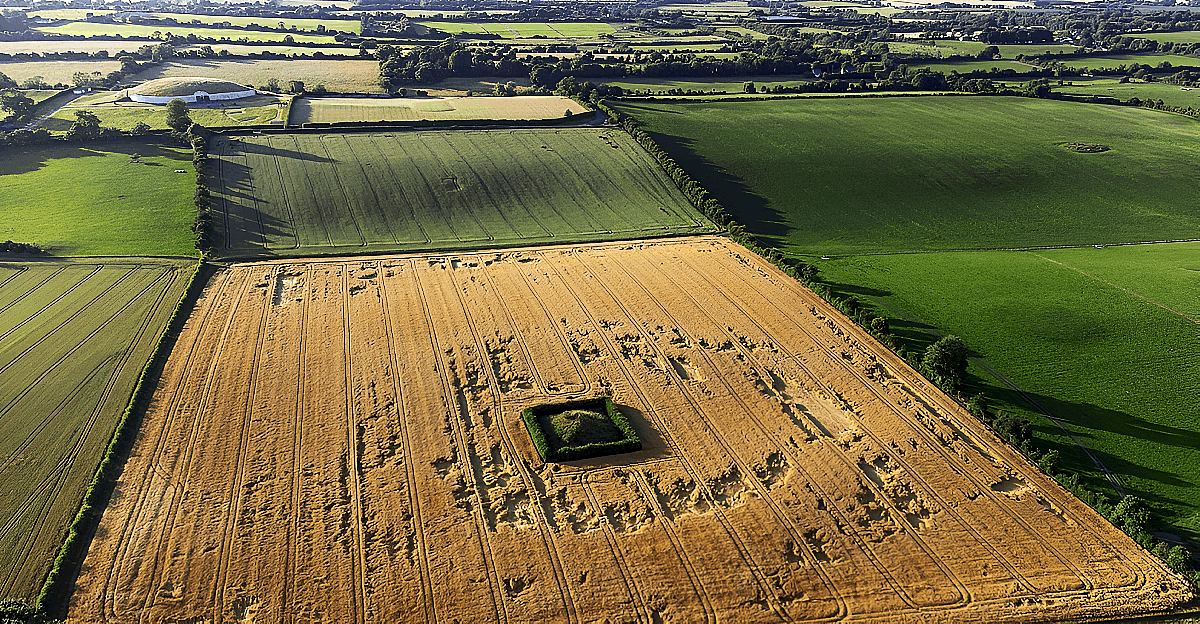
In July 2018, an unusually severe heatwave swept across Ireland, parching the fields of County Meath. But the scorched land revealed more than dry soil—it exposed mysterious cropmarks near Newgrange, one of the world’s most famous prehistoric sites. From above, the faded wheat revealed strange circular patterns invisible from the ground.
Amateur drone archaeologists Anthony Murphy and Ken Williams noticed the shapes and began investigating. Their flight over the Boyne Valley would lead to one of the most astonishing archaeological discoveries of the century: a hidden monument larger, older, and more mysterious than Stonehenge.
The Drones That Changed History

Murphy and Williams flew over the valley on July 10, 2018, armed with only cameras and drones. As the evening sun cast long shadows, their lenses captured the ghostly outline of a vast circle etched into the crops.
It wasn’t just another field pattern—it was a colossal henge, long buried beneath centuries of farming. Within hours, the images went viral, forcing professional archaeologists to take notice.
Clare Tuffy of Ireland’s Office of Public Works said, the find was “probably the greatest discovery in archaeological terms in Ireland of this century.”
A Monument Beyond Imagination
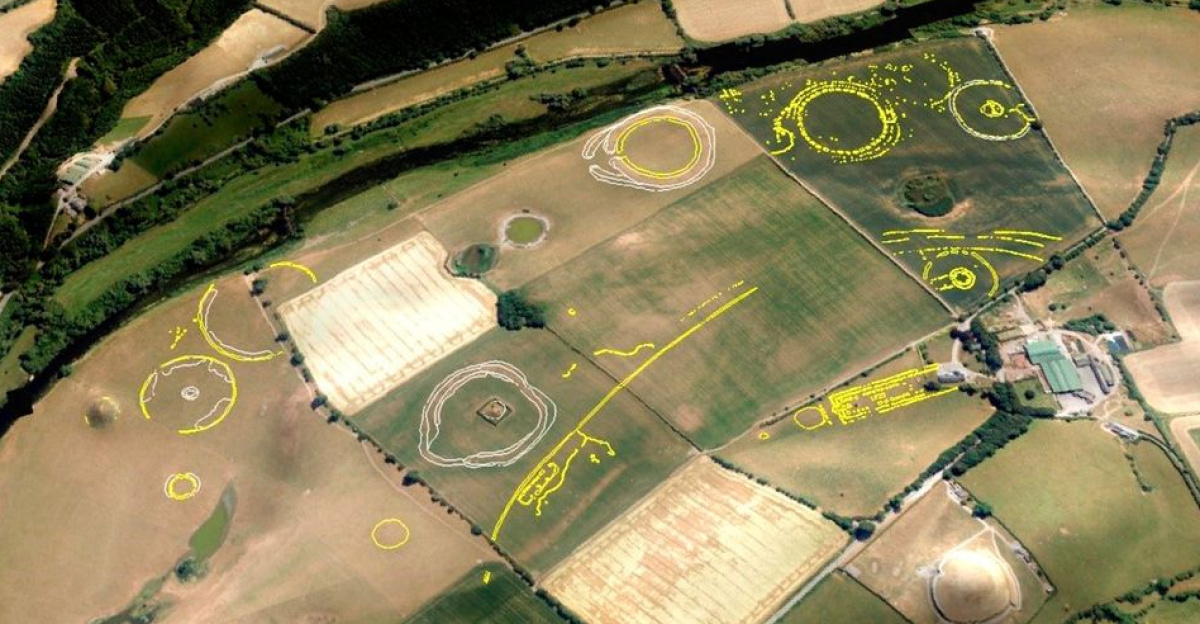
Measuring an astonishing 150 meters across—nearly five football fields—the newly discovered henge dwarfs most prehistoric monuments. Early analysis places its construction roughly 4,500 years ago, during the late Neolithic to early Bronze Age. That makes it significantly older than Stonehenge in England.
Its sheer size alone suggests it was no ordinary gathering place. Thousands of people would have been required to cut the ditches, erect timber posts, and maintain the structure. It was, in every sense, a statement of power, coordination, and ceremonial purpose on a scale rarely seen in prehistoric Europe.
A Double-Ditched Mystery
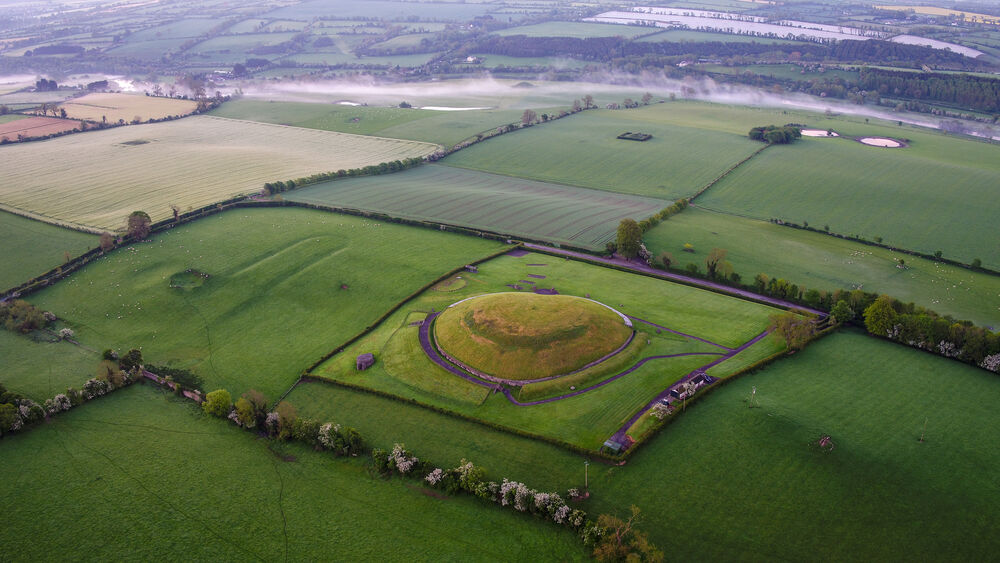
What truly sets this monument apart is its unusual design. The cropmarks revealed a rare “double-ditched segmented” structure—two great rings divided into sections, with postholes suggesting enormous timber uprights once stood there. This was no simple fence. It was a deliberate, complex construction with layered meaning.
The segmented circles may have guided processions or marked ritual boundaries. Archaeologists believe the monument’s architecture signaled sacred order, distinguishing it from other henges in Britain and Europe. This wasn’t just a gathering space. It was a monumental stage for ceremonies we can only begin to imagine.
The Great Palisade Revealed

Further aerial exploration uncovered something even more astonishing: traces of a colossal timber fence stretching nearly a kilometer across the Boyne Valley. Known now as the Great Palisade, this triple—or sometimes quadruple—barrier cut across terraces between Newgrange and the River Boyne. It may have separated sacred zones or controlled movement during rituals.
Its scale surpasses most other prehistoric timber structures in Europe. Together, the palisade and the super-henge suggest a ritual complex of extraordinary ambition—an ancient city of ceremony carved into the land long before written history.
A Rectangular Enigma

Aerial imagery revealed something unusual among the circles and ditches: a large rectangular outline measuring 22 by 16 meters. Unlike the great rings, this shape stood out. Its cropmarks suggest deep timber posts set into long trenches, perhaps forming a massive hall-like structure.
Was it an entrance? A sanctuary? Or the ceremonial heart of the henge? No one knows for sure. What is clear is that the rectangular form broke with tradition, hinting at a unique role within the ritual landscape that may have guided participants into sacred space or marked the presence of leaders.
Overlapping Worlds of the Past
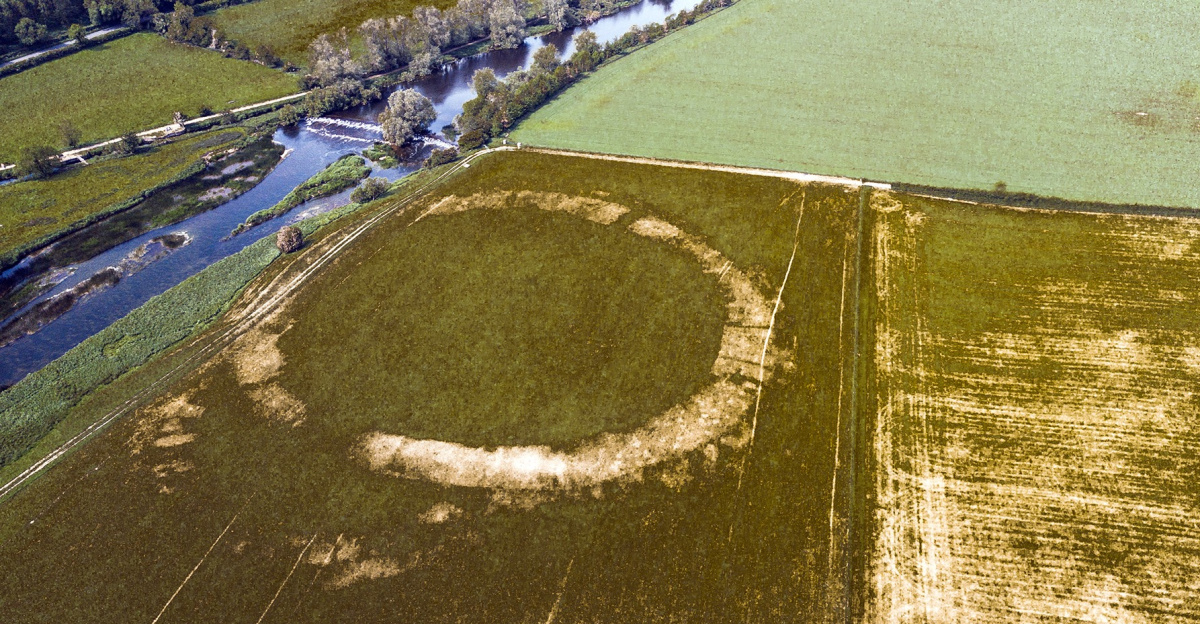
Drone and helicopter surveys soon revealed even more hidden monuments, layered like palimpsests across the valley floor. Some circles overlapped others, their ditches crossing and re-crossing in ways that suggested generations of rebuilding and renewal. Archaeologists dubbed one feature the “Hidden Henge,” a 160-meter-wide circle that had vanished entirely from view until the 2018 drought exposed it.
These overlapping enclosures point to a landscape constantly in use and reinvention, where ritual space was repeatedly redefined across centuries, each generation leaving its imprint on the sacred floodplain.
Expanding a World Heritage Site
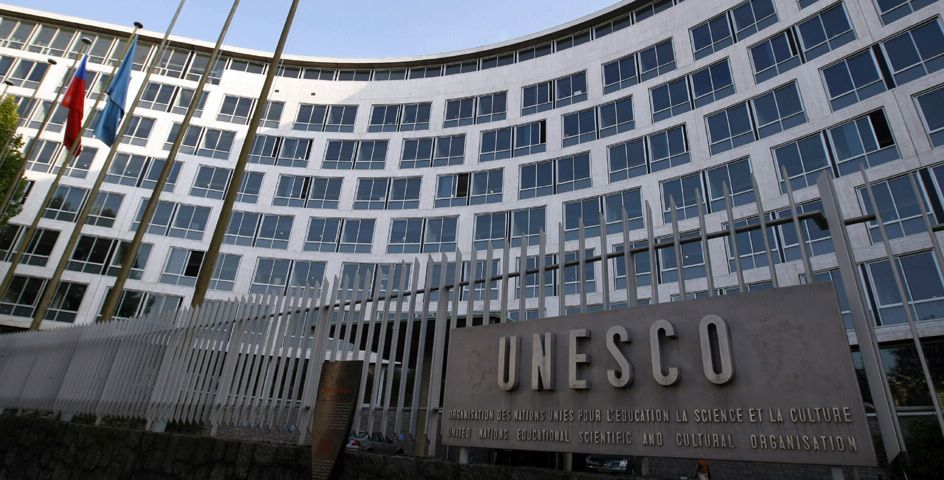
The Boyne Valley was already famous. Since 1993, Brú na Bóinne—home to the remarkable passage tombs of Newgrange, Knowth, and Dowth—has been a UNESCO World Heritage Site. Those megalithic tombs are older than the pyramids of Giza and are famed for their solstice alignments.
The 2018 discoveries dramatically expanded the known scale of this ritual landscape. Far from being a cluster of isolated tombs, Brú na Bóinne was revealed as an immense ceremonial center, rich with henges, palisades, and earthworks.
The discovery reshaped our understanding of how Neolithic communities expressed power, spirituality, and connection to the cosmos.
Aerial Archaeology’s Golden Moment
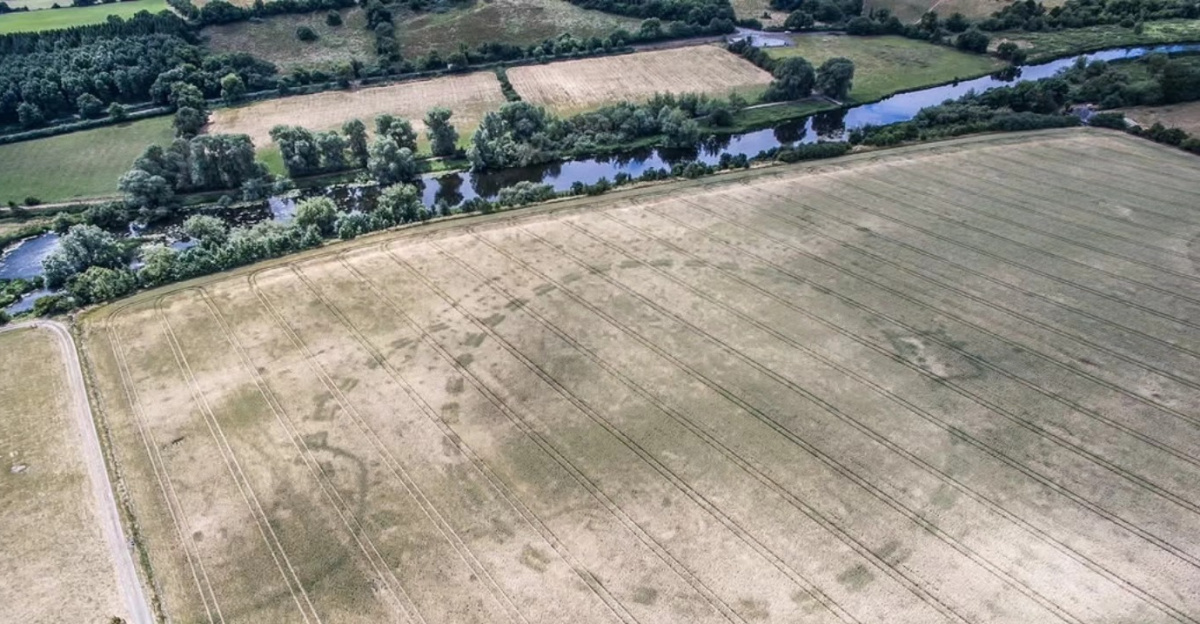
Without drones, none of this would have been possible. The parched soil of 2018 created perfect conditions for aerial discovery. Ancient ditches and postholes held moisture differently than the surrounding soil, causing crops above them to grow at distinct rates. From the ground, the differences were nearly invisible. From above, they formed clear patterns.
Archaeologists call them cropmarks. The extreme drought created a once-in-a-lifetime window where 21st-century technology met ancient landscape, unlocking secrets that had lain undisturbed for millennia. In this sense, the 2018 heatwave transformed tragedy into opportunity.
Why No Excavation?
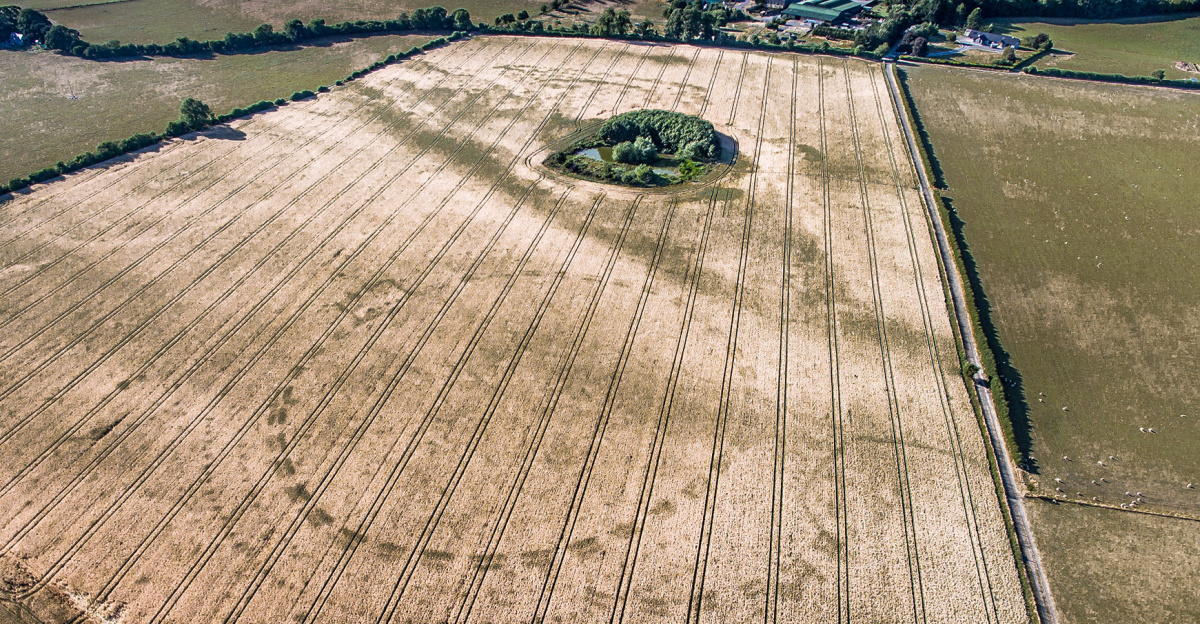
Despite global excitement, archaeologists made one thing clear: the super-henge would not be excavated. The monument lies on private farmland, and excavation would be costly, destructive, and potentially impossible to preserve. Only non-invasive techniques like aerial photography, geophysics, and remote sensing will be used.
Experts warn that the cropmark window is fleeting. Every plow, every harvest risks erasing traces of the henge forever. What we know today comes from images captured during one extraordinary summer, preserved before the land returned to its ordinary rhythms of agriculture.
A Valley of Rituals
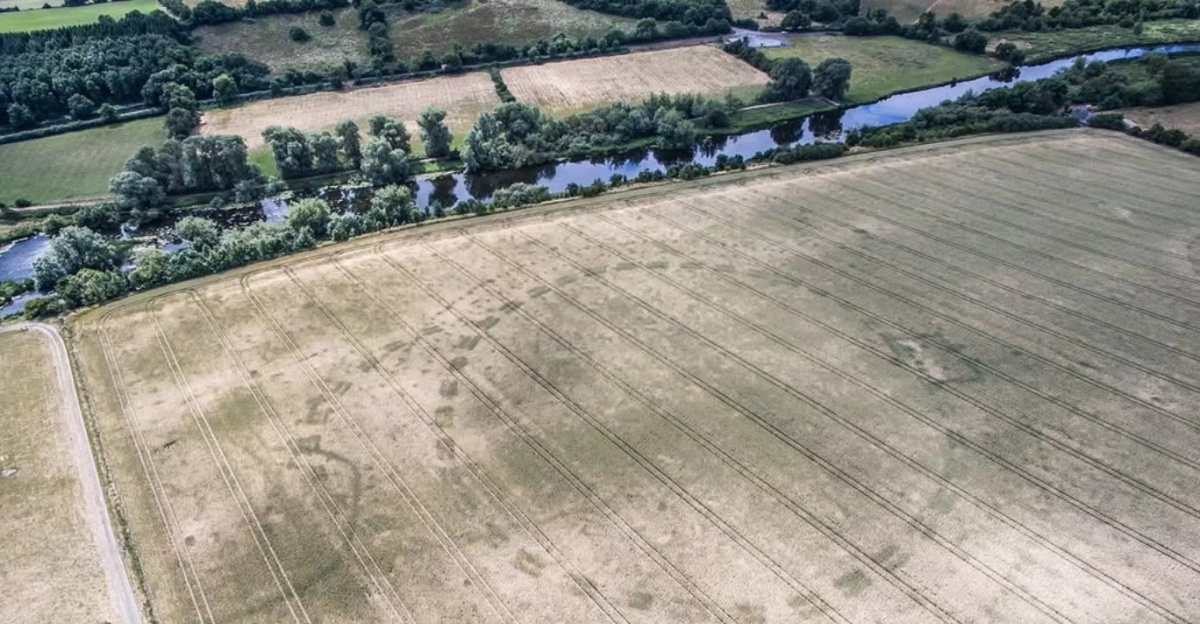
The new discoveries reveal the Boyne Valley as a vast ceremonial heartland. Timber circles, segmented ditches, palisades, and rectangular halls created a complex choreography of sacred space. Scholars believe processions, seasonal festivals, and celestial alignments dictated life here.
The monuments were not just static structures but stages for ritual theater—places where entire communities gathered to mark time, honor ancestors, and reinforce social bonds. Their interconnectedness suggests organization and planning on a scale far beyond what was once thought possible for Neolithic Europe.
Older Than Stonehenge
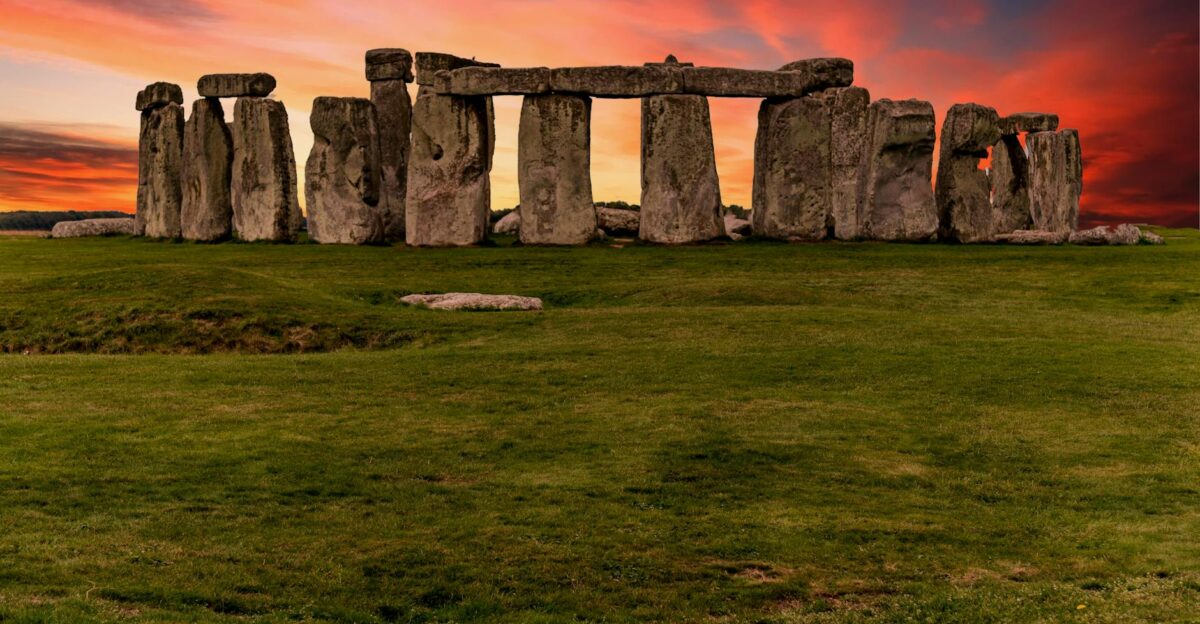
Often considered Europe’s most significant prehistoric monument, Stonehenge faces a rival. Newgrange itself is 5,200 years old—older than Stonehenge by centuries. The 2018 henge discovery, dating back 4,500 years, belongs to that same tradition. Together, they show Ireland as a focal point for early monument building long before the Salisbury Plain rose to prominence.
Far from being an isolated marvel, Stonehenge may have been part of a much wider tradition of monumental landscapes that began—and perhaps reached their height—along the River Boyne. The implications for European prehistory are staggering.
Networks of Sacred Monuments
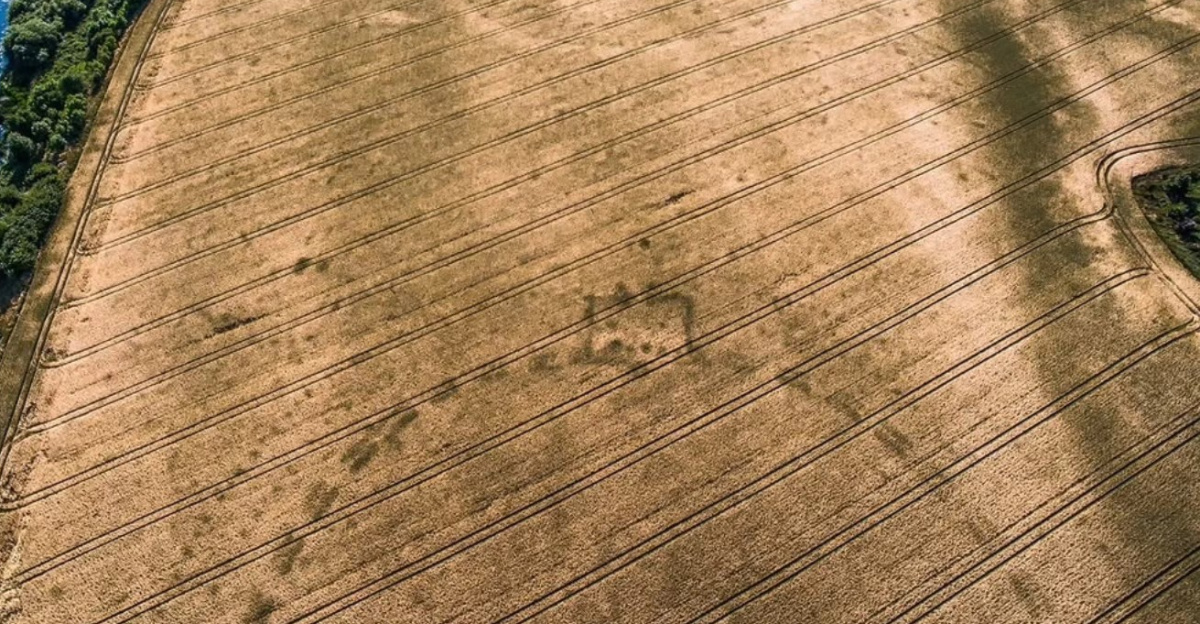
What makes the Boyne Valley remarkable is not just one henge, but the density of monuments discovered. At least eight major henges have now been mapped along the floodplain, alongside dozens of smaller enclosures, timber structures, and burial sites. Some feature intricate arrangements of postholes, while others display segmented banks and ditches.
This wasn’t random construction. It was careful, coordinated planning that unfolded over centuries. The monuments seem to form networks—possibly for different clans, rituals, or cosmic alignments. Together, they reveal a sacred topography unlike anywhere else in Europe.
When Weather Becomes Archaeology
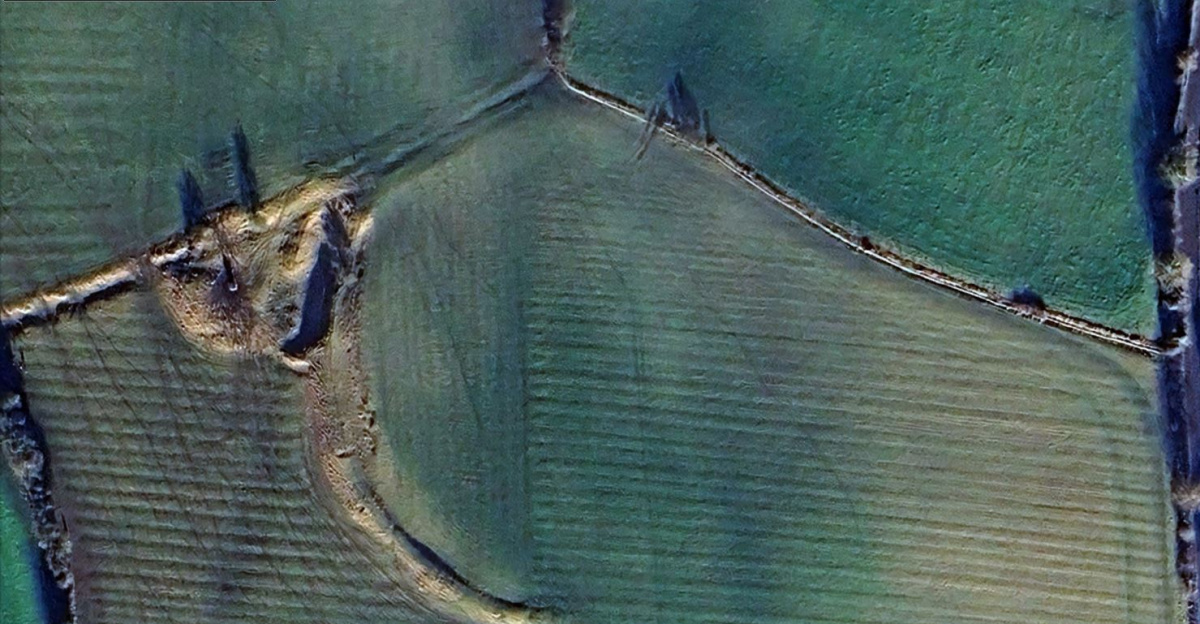
The irony of the 2018 discovery is that it took an extreme climate event to reveal the past. Without the drought, the henge would have remained invisible beneath crops and soil. As climate change increases the frequency of such extremes, archaeologists expect more hidden landscapes to appear worldwide.
Similar discoveries have already been made across Britain and Europe. The Boyne Valley may just be the beginning. What once seemed devastating to farmers proved priceless for science, a reminder that even the harshest weather can unearth treasures from humanity’s deepest past.
A Viral Discovery
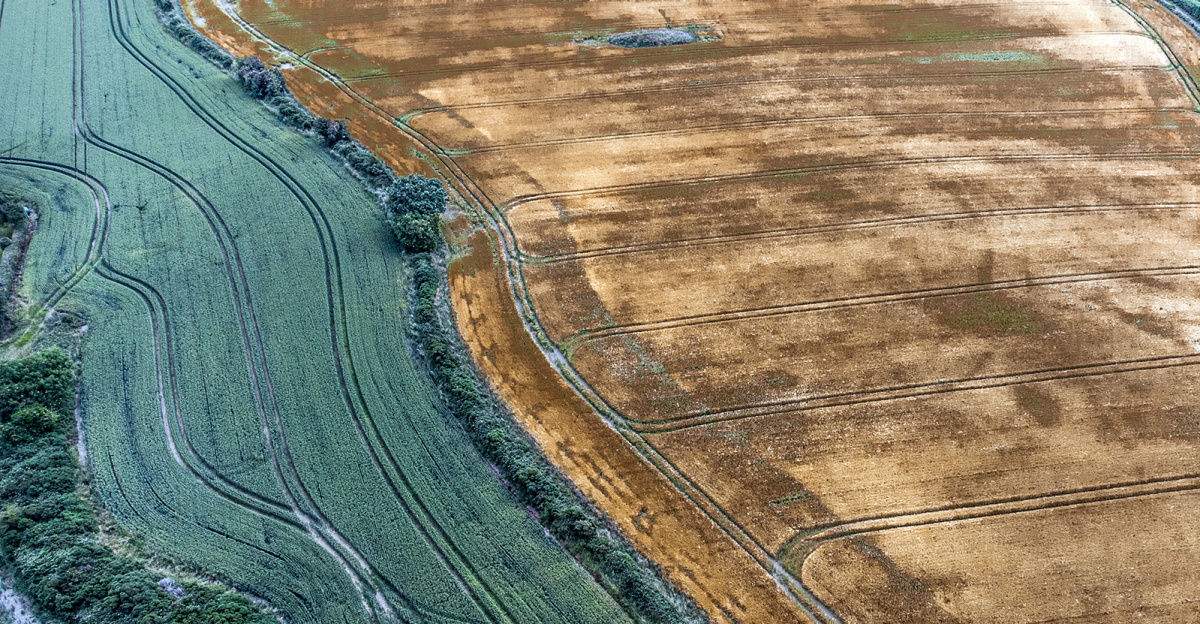
News of “Dronehenge,” as it was quickly dubbed, spread worldwide within days. The story captured imaginations not just for its scale but also for its sheer serendipity: an accidental discovery by enthusiasts armed with drones. Television crews descended on Meath. International headlines marveled at Ireland’s newly revealed prehistory.
Beyond archaeology, the find sparked debate over heritage preservation, climate impacts, and the role of citizen scientists. For many, the viral story highlighted how much of human history remains unseen, waiting for the right moment to be revealed.
Clues to Ancient Hierarchies

Recent genetic research on skeletons from nearby Newgrange revealed startling evidence that certain elites may have intermarried within their family lines to preserve power. The henges and palisades could have reinforced that authority through spectacle and ritual.
Imagine massive gatherings where rulers asserted control by aligning ceremonies with the sun or moon, cementing their dominance in both earthly and cosmic terms. If true, the super-henge wasn’t just a sacred place.
It was also a stage for politics, power, and social hierarchy—a reminder that monument building often served more than spiritual ends.
Symbols in Stone and Wood
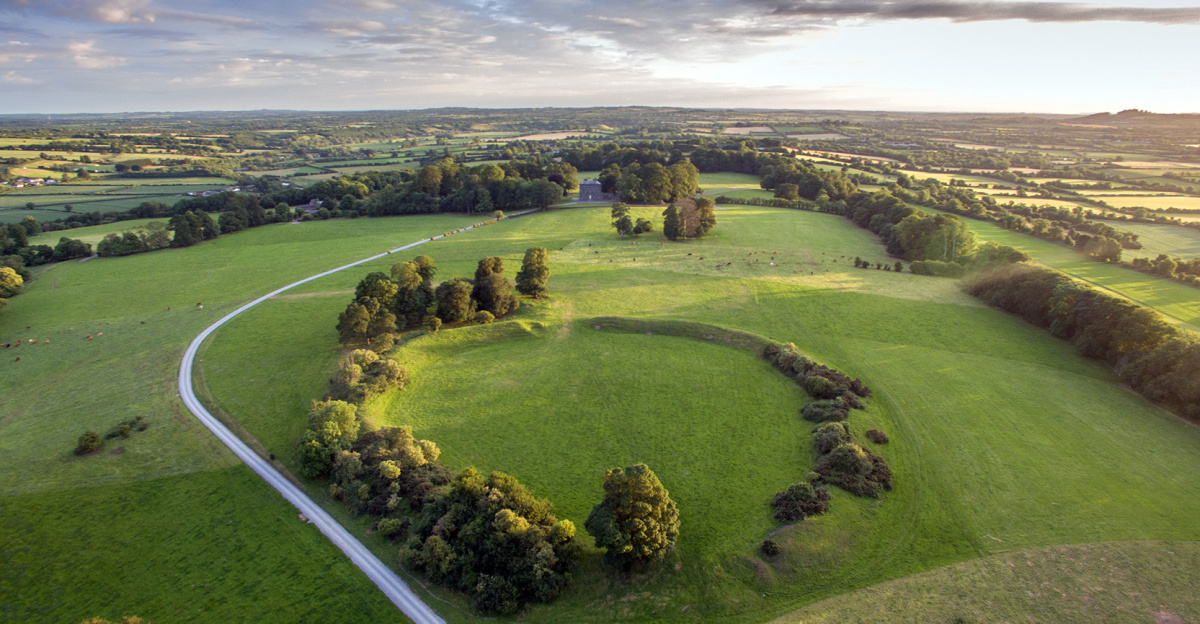
The carved spirals, zigzags, and lozenges found on stones at Newgrange and Knowth speak an undeciphered symbolic language. Though the 2018 henge was built of timber and earth, researchers believe it may have been part of the same artistic and spiritual system. Its positioning relative to tombs and decorated stones suggests coordination across materials.
The monuments may have guided participants through different stages of ritual—stone for permanence, timber for impermanence, earth for transformation. Together, they formed a symbolic landscape where art, architecture, and spirituality merged in ways modern minds still struggle to grasp.
The Race to Preserve the Past
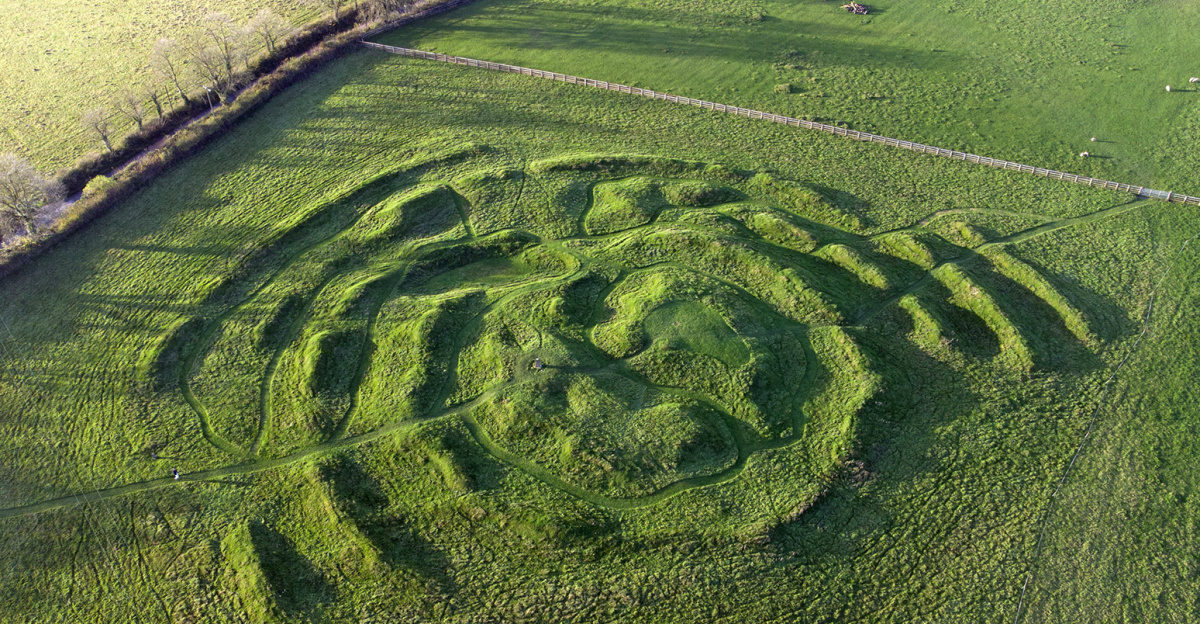
For all its grandeur, the Boyne Valley’s ancient landscape faces modern threats. Farming, development, and construction risk erasing fragile features that only appear under rare conditions. UNESCO has repeatedly warned of pressures on the integrity of Brú na Bóinne. Cropmarks fade quickly, and unless recorded, they vanish forever.
Preservation now depends on rapid documentation, digital modeling, and international cooperation. The discovery is both exhilarating and sobering: a glimpse into a lost world, and a reminder that such glimpses are rare, fragile, and easily lost to the demands of the present.
Archaeology Reimagined
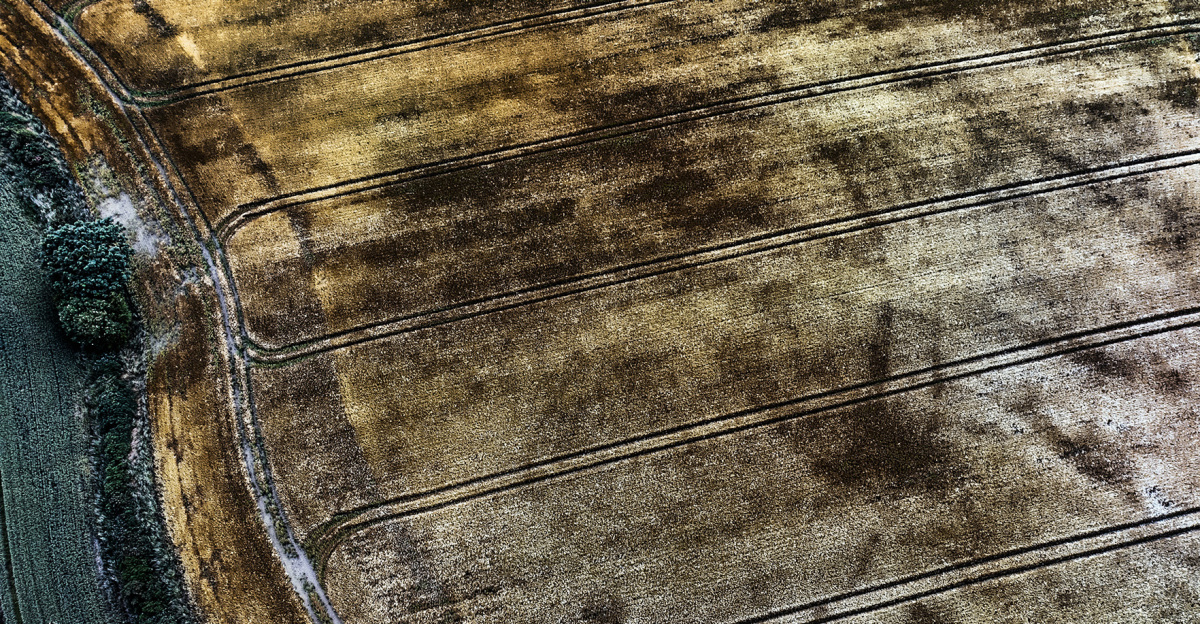
The 2018 super-henge discovery marks more than a new chapter in Irish prehistory. It symbolizes a transformation in how archaeology itself is practiced. Aerial photography, drones, geophysical surveys, and genetic analysis now converge to create a fuller picture of the past.
No single discipline holds the answers anymore. Instead, collaboration across technologies and between professionals and enthusiasts drives discovery. The “hidden henge” phenomenon has already inspired similar surveys elsewhere.
If Ireland’s story teaches anything, it’s that the past is vast, the ground beneath us is full of secrets, and the next revelation may already be waiting.
A Fleeting Window into Antiquity

Ultimately, the super-henge stands as both a wonder and a warning. Without excavation, our knowledge remains limited to cropmarks, surveys, and photographs. Archaeologists call the 2018 drought a “once-in-a-lifetime” opportunity, and they may be right. The outlines revealed that summer has faded, leaving only images, maps, and data—a fragile archive of a monumental past.
Yet even that glimpse reshaped our understanding of Europe’s prehistory. Thanks to Murphy and Williams’s sharp eyes and persistence, history briefly stepped out of the soil, reminding us that sometimes the most significant discoveries await just above our heads.